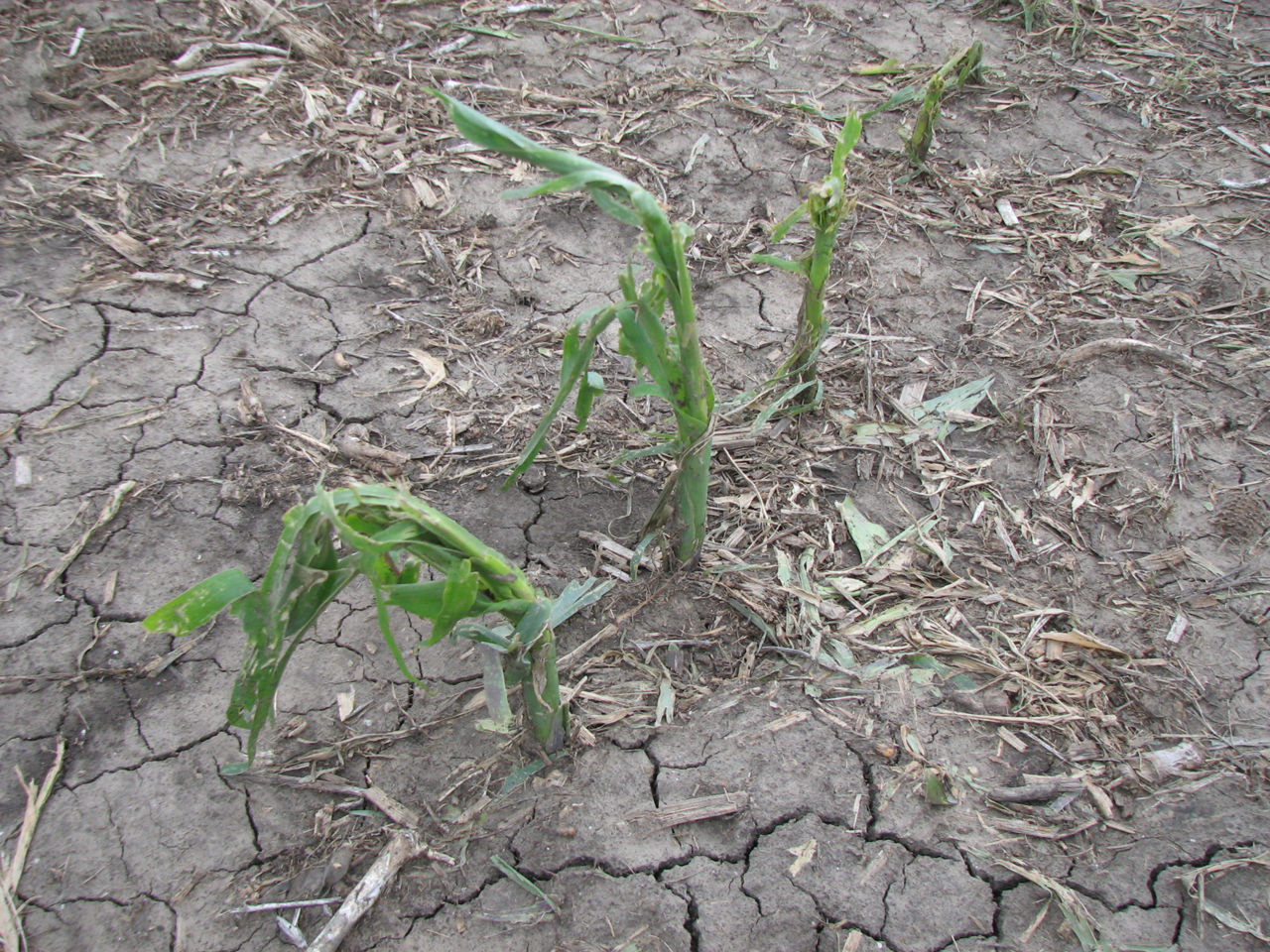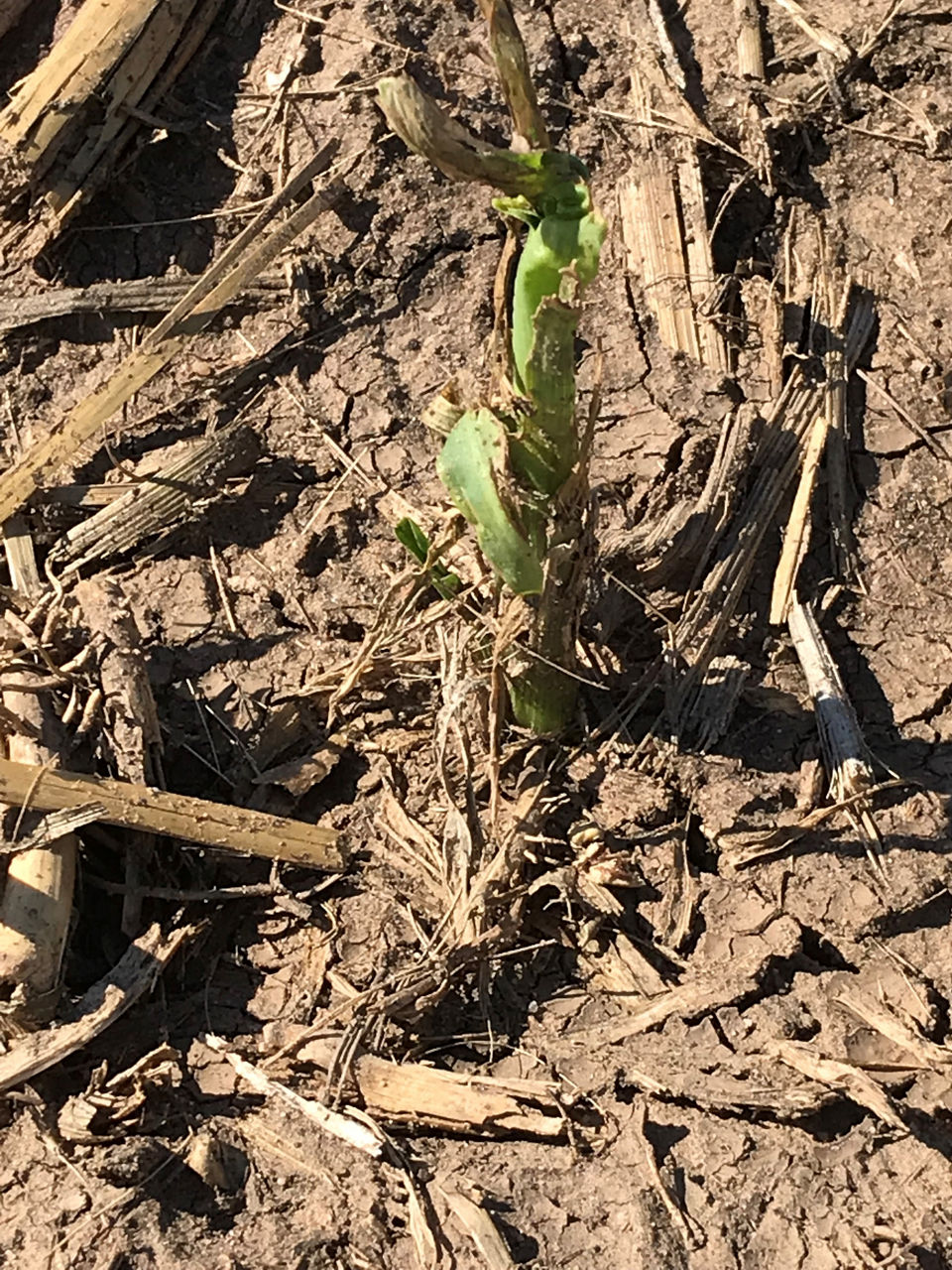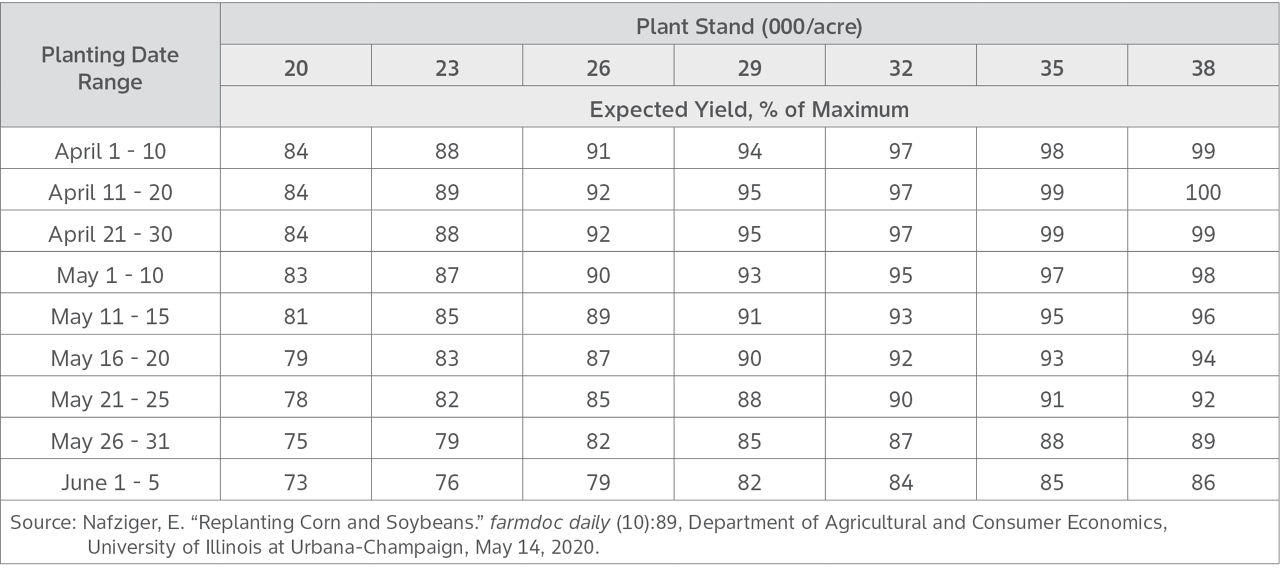7 MIN READ
Early Season Hail Damage
April 20, 2025
Spring thunderstorms can bring the threat of damaging hail to young corn plants. The potential for any yield loss depends on the growth stage of the crop, the size of the hail stones, the severity of the damage, and environmental conditions after the hail event. A general recommendation is to wait at least five days before evaluating hail damage to young corn plants because of these factors and the potential for recovery.
The survival of young corn plants is largely dependent on the location and health of the plant’s growing point. The growing point generally remains protected below the soil surface until the collar of the sixth leaf is visible (V6 growth stage, Figure 1). When the growth stage is greater than V6, the growing point becomes susceptible to direct damage from hail stone hits. The five-day wait is recommended to determine if the growing point is pushing new tissue through damaged leaves. If the growing point is damaged, recovery is doubtful.1 For more information regarding corn growth stages, please see Determining Corn Growth Stages.
It is important to understand that the National Crop Insurance Service counts a leaf as fully developed when the leaf tip points or droops to the ground (Figure 1). This can happen prior to the collar becoming visible. Based on this method, a 9-leaf plant may lose 1% and 12% of its yield potential when 25% and 95% of the leaf area is destroyed, respectfully.3

To assess potential growing point damage, select random plants throughout the field, dig up the plant, and cut the stalk vertically to expose the pyramid-shaped tissue near the base (Figure 2). The growing point should be healthy in appearance without any dark spots. Dark spots could indicate that the tissue is beginning to mold or rot. The size of the hail stones is important because pea sized hail is unlikely to cause damage to a protected growing point. However, if soil is wet from heavy rain and large hail stones (around golf ball size) strike the soil and plant, the stones could penetrate deep enough to damage the growing point.

Leaf Damage
The shredded leaves of young corn plants can make damage appear worse than it is (Figure 3). Shredded leaves that are attached to the plant can continue to photosynthesize and contribute to plant growth and development.2 Leaves that are twisted or matted together can usually separate within three to five days. New leaves should emerge intact; however, they may have some bruising or holes depending how deep hail stones penetrated the stalk.

Assessing Viable Population
After waiting at least five days, population counts can be taken to estimate viable plants. To make the counts, randomly select several areas within the field and measure 1/1000th of an acre based on row width (Table 1). Count the number of plants within the measured area that appear healthy (new growth should be pushing through the damaged leaves (Figure 4) and multiply by 1,000 to calculate plants per acre. When the population is reduced early in the growing season, yield loss is not directly proportional to the number of plants lost.
Table 1. Row measurement for 1/1000th acre based on row width.


Surviving plants may compensate for absent plants by increased ear size, deeper kernels, or the development of a second ear.1 Tables have been developed that compare the yield potential of existing populations to that of a replanted crop based on planting date, replanted seeding rate, and the cost associated with replanting (Table 2). A later planted crop with a full stand may produce less grain than an earlier planted crop with a reduced stand.3
Table 2. Expected Yield (% of Maximum) Based on Planting Date Range and Plant Stand.

Management Considerations
The five-day wait period is crucial to determine survivability. However, plant health should continue to be checked because wounding can lead to increased disease susceptibility. This leads to the inevitable question as to whether foliar fungicide sprays are warranted. Many of the diseases that are favored by wounding are not controlled with foliar fungicides, these include bacterial diseases, common smut, and stalk rots. Furthermore, many of the foliar diseases that can be managed with foliar fungicides (gray leaf spot, northern corn leaf blight, and southern rust) do NOT require a wound to infect the plant. It is speculated that the increased free moisture and relative humidity that occur after a hailstorm are the causes of increases fungal disease incidence after a hailstorm and not the hail itself.4
Severely damaged plants can lead to gaps in the plant population, exposing the soil to sunlight and encouraging weed growth. However, before applying herbicides after a hail event, corn growing points should be examined to determine growth stage if leaves are missing to ensure the herbicide is applied according to the label should the herbicide label indicate application by a specified leaf stage.
For information on mid- to late-season hail damage to corn, please refer to Late Season Hail Damage in Corn.
Sources:
1Nielson, R.L. 2015. Recovery from hail damage to young corn. Corny News Network Articles. Purdue University. https://www.agry.purdue.edu/.
2Thomison, P. Hail injury to corn varies depending on development stage. Agronomic Crops Network. The Ohio State University Extension Service. https://agcrops.osu.edu/.
3Vorst, J.V. (Purdue University). 2002. Assessing hail damage to corn. NCH 1. Climate & Weather. National Corn Handbook. Iowa State University Extension.
4Jackson-Ziems, T. Fungicide use in corn after hail or wind damage. University of Nebraska. https://cropwatch.unl.edu/fungicide-use-corn-after-hail-or-wind-damage/.
Nafziger, E. Replanting Corn and Soybeans. farmdoc daily (10):89, Department of Agricultural and Consumer Economics, University of Illinois at Urbana-Champaign, May 14, 2020. https://farmdocdaily.illinois.edu/2020/05/replanting-corn-and-soybeans.html
1222_124393